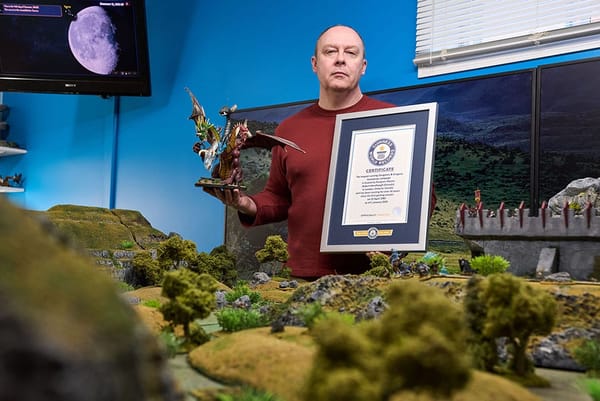This company is trying to recreate extinct animals

The Jurassic Park movies made it pretty obvious that bringing ancient creatures back to life was a very bad idea, but one company is trying to do it anyway. Sara Ord works at a "de-extinction" company called Colossal Biosciences, where they are trying to bring back everything from an extinct dog-like marsupial called a thylacine, or "Tasmanian tiger," to a full-blown woolly mammoth. But Colossal isn't using DNA from a fly trapped in amber, the way they did in the movies – Ord and her team are trying to use gene editing to gradually change the DNA of one creature to make it more like the other. So one project consists of trying to turn Asian elephants into something resembling a woolly mammoth, by adding genes for cold resistance and thick red hair.
Not that long ago, people ate ground-up mummies as medicine
For several hundred years, peaking in the 16th and 17th centuries, many Europeans, including royalty, priests and scientists, routinely used medicines containing human bones, blood and fat for everything from headaches to epilepsy. Mummies were stolen from Egyptian tombs, and skulls were taken from Irish burial sites. Gravediggers robbed and sold body parts. “The question was not, ‘Should you eat human flesh?’ but, ‘What sort of flesh should you eat?’ ” says one researcher. Skull was one common ingredient, taken in powdered form to cure head ailments. Thomas Willis, a 17th-century pioneer of brain science, brewed a drink for apoplexy, or bleeding, that mingled powdered human skull and chocolate. And King Charles II of England sipped “The King’s Drops,” his personal tincture, containing human skull in alcohol.

The truth about the burning of the ancient Library of Alexandria
There's a common belief that the burning of the famous library of Alexandria, one of the wonders of the ancient world, was the most destructive fire in the history of human culture, and set civilization back thousands of years, as one History Channel documentary put it. But classical scholars say that's absurd. There were hundreds of libraries of Greek and Latin texts dotted around the Mediterranean. Alexandria was the biggest, but it was just one fish in a sea of libraries. There were also important centres at Pergamon, Athens, Rome, Constantinople, and many important private collections. Caesar's fire did not stop Athenaeus and Julius Africanus from being well-read more than two centuries later, and Pliny the Elder and Pausanias did their research in Athens, not in Alexandria.

Experts can't explain a mysterious epidemic of kidney disease in Central America
Since the 1990s, tens of thousands of people across Central America, Sri Lanka, India, and elsewhere have been killed by a kidney disease called CKDu, in a ballooning epidemic that has baffled researchers, overwhelmed health care systems, and wiped out entire families. Agricultural communities seem particularly vulnerable, but the disease has surfaced among other workers, too. The precise number of deaths is unknown, but in locales where the disease is endemic, such as the Bajo Lempa region of El Salvador, experts estimate that up to one quarter of the male population has CKDu. It cannot be cured, only treated with dialysis, and in rural communities such as Tierra Blanca, it is rare for dialysis patients to survive more than a few years.

Would you live on a giant yacht the size of a small city?
The Pangeos Terayacht concept is a floating city housing 60,000 people in a floating, turtle-shaped vessel measuring 1,800 feet. The name Pangeos is a reference to the prehistoric supercontinent of Pangea, and in terms of seaborne transportation, it's continental in size. The Pangeos floats on 30,000 individual cells, propelled and powered without emissions by solar panels driving nine 16,800 horsepower engines at a top speed of five knots. The "flippers" could also theoretically generate power from waves and wind. Residents would stay in a combination of villas and apartments, with a mall, gardens, pools, and beach club for recreation. Facilities for tenders, helicopters, and hangers allow for transportation to and from the vessel. A shipyard big enough to build the behemoth would be needed, with designer Lazzarini estimating eight years and $8 billion for completion.

If you haven't heard of this famous Scorcese movie, don't feel bad – it never existed
Tumblr fans love to create fictional scenarios about all kinds of things, in a kind of never-ending ARG or "alternate reality game." In one recent case, they took a weird label on a knock-off pair of boots and transformed it into a literary and cinematic masterpiece known as Goncharov – a movie that Martin Scorcese supposedly directed, starring Robert de Niro, AlPacino, and Cybill Shepherd. The movie, which was supposedly released in 1973, is about “a former discotheque owner who comes to Naples after the fall of the Soviet Union” in order to become a mob boss. Fans have created everything elaborate back-stories to posters and even DVD covers, as well as a cash-in video game with accompanying soundtrack, a 3D model of the VHS release, and a piano theme song.

This quick brown fox is having some trouble jumping over the lazy dog
The quick brown fox jumps over the lazy dog.. 😉 pic.twitter.com/FmbM6vhDTS
— Buitengebieden (@buitengebieden) November 23, 2022



